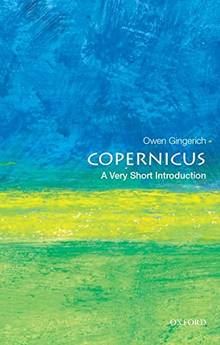Copernicus: a Very Short Introduction
Gingerich, Owen
Éditeur : OXFORD UNIVERSITY PRESS
ISBN papier: 9780199330966
Parution : 2016
Code produit : 1450459
Catégorisation :
Livres /
Science /
Physique /
Astrophysique
Formats disponibles
| Format | Qté. disp. | Prix* | Commander |
|---|---|---|---|
| Livre papier | En rupture de stock** |
Prix membre : 10,76 $ Prix non-membre : 11,95 $ |
*Les prix sont en dollars canadien. Taxes et frais de livraison en sus.
**Ce produits est en rupture de stock mais sera expédié dès qu'ils sera disponible.
Description
Nicolaus Copernicus (1473-1543) is a pivotal figure in the birth of modern science, the astronomer who "stopped the sun and set the earth in motion." Born in Poland, educated at Cracow and then in Italy, he served all of his adult life as a church administrator. His vision of a sun-centereduniverse, shocking to many and unbelievable to most, turned out to be the essential blueprint for a physical understanding of celestial motions, thereby triggering what is commonly called "the Copernican revolution." A first edition of his world-changing treatise, De Revolutionibus OrbiumCoelestium, has most recently been auctioned for more than $2 million.In this book, leading historian of science Owen Gingerich sets Copernicus in the context of a rapidly changing world, where the recent invention of printing with moveable type not only made sources more readily available to him, but also fueled Martin's Luther's transformation of the religiouslandscape. In an era of geographical exploration and discovery, new ideas were replacing time-honored concepts about the extent of inhabited continents. Gingerich reveals Copernicus' heliocentric revolution as an aesthetic achievement not dictated by observational "proofs," but another new way oflooking at the ancient cosmos.Deftly combining astronomy and history, this Very Short Introduction offers a fascinating portray of the man who launched the modern vision of the universe. Out of Gingerich's engaging biography emerges the image of a scientist, intellectual, patriot, and reformer, who lived in an era when politicalas well as religious beliefs were shifting.























